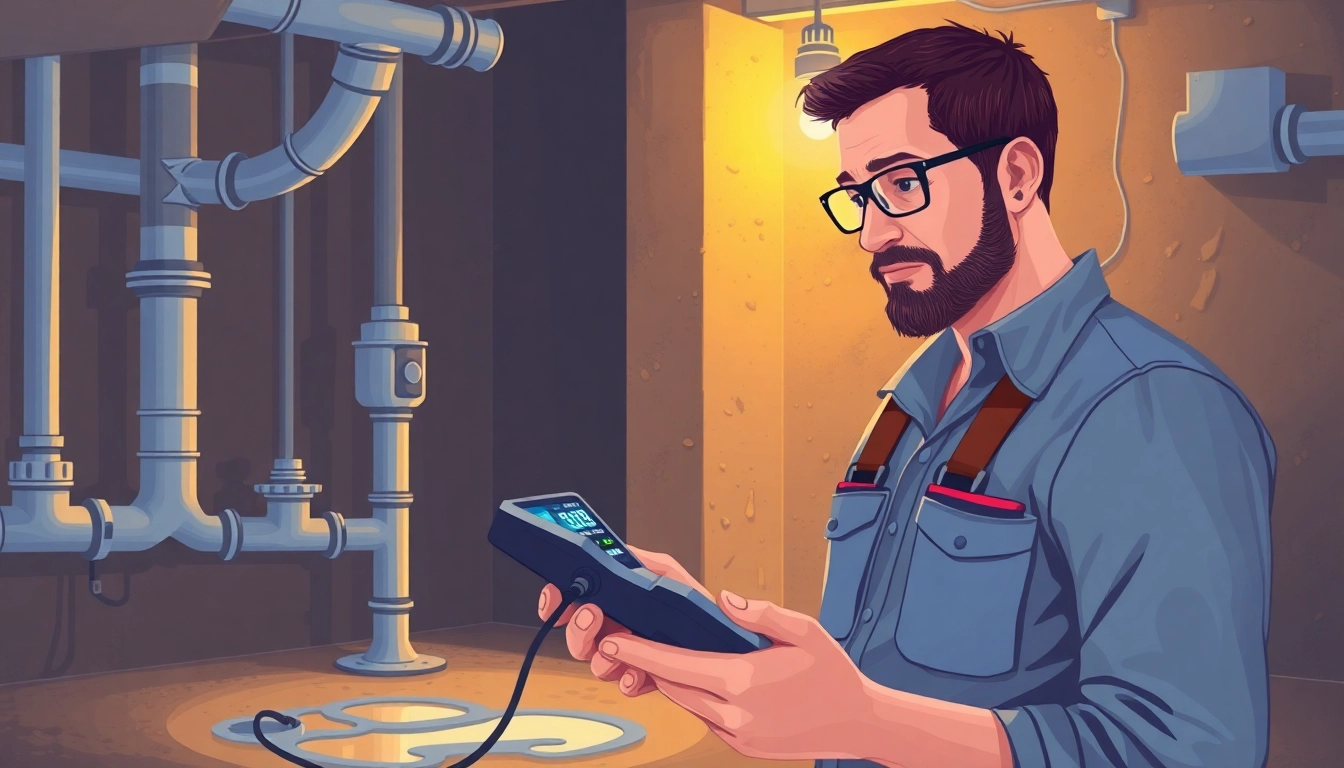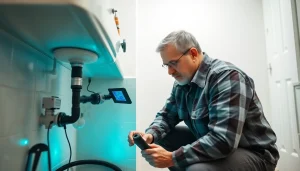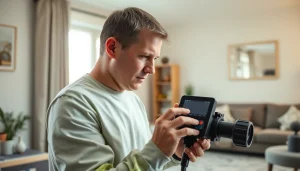Ultimate Plumbing Leak Detection: 5 Essential Techniques for Homeowners

Understanding Plumbing Leak Detection
What is Plumbing Leak Detection?
Plumbing leak detection is the process of identifying leaks in plumbing systems that can cause water damage, increase utility bills, and create uncomfortable living conditions. This process involves various techniques and technologies to locate leaks that may not be visible to the naked eye, making it a vital service for homeowners and businesses alike. By utilizing methods ranging from simple observation to advanced technological tools, plumbing professionals can pinpoint the source of leaks with high accuracy, ensuring prompt repairs and minimizing potential damage.
Importance of Plumbing Leak Detection
Detecting leaks promptly is critical, as even small leaks can lead to significant issues over time. Not only does timely leak detection help prevent water damage to property, it also plays a crucial role in water conservation. Leaks can waste thousands of gallons of water, contributing to higher water bills and stressing local water supplies. Therefore, Plumbing Leak Detection is essential not only for maintaining the integrity of piping systems but also for promoting sustainable water use.
Common Signs of a Leak
Homeowners should be vigilant about signs that indicate possible leaks in their plumbing systems. Some common signs include:
- Unexplained increases in water bills
- Wet spots on walls, ceilings, or floors
- Mold or mildew growth near plumbing fixtures
- The sound of running water when no taps are on
- Water pooling around the foundation of the home
These signs often signal the presence of hidden leaks that require professional assessment.
Tools and Technologies for Effective Plumbing Leak Detection
Advanced Equipment for Plumbing Leak Detection
Modern leak detection relies heavily on advanced equipment that can accurately locate sources of leaks without invasive procedures. Key tools include:
- Acoustic Leak Detectors: These devices amplify the sound of water escaping from pipes, allowing technicians to hone in on the exact location of a leak.
- Infrared Cameras: By detecting temperature differences, these cameras can reveal hidden leaks behind walls and underneath floors.
- Moisture Meters: These instruments measure moisture levels in various building materials, helping identify areas potentially affected by leaks.
- Video Inspection Cameras: Small cameras attached to flexible rods can be inserted into pipes to visually inspect their interior for cracks, leaks, and blockages.
Comparative Analysis of Detection Methods
Different methods of plumbing leak detection offer distinct advantages and limitations. For example, while acoustic leak detection is highly effective for identifying leaks in pressurized water systems, video inspection excels in examining the condition of pipelines. Infrared thermography can be highly beneficial for identifying leaks within walls but may not provide definitive diagnoses on its own.
It is important for plumbing professionals to employ a combination of methods depending on the specific circumstances of the leak, ensuring a comprehensive understanding of the leak’s source and potential impact.
Implementing Technology for Efficient Leak Detection
To improve efficiency and accuracy, many plumbing professionals are investing in sophisticated leak detection technologies. This includes using software that utilizes data analytics to predict the likelihood of leaks based on historical usage patterns and environmental conditions. Furthermore, integrating smart home technology such as leak detection sensors can allow for real-time monitoring and alerts, empowering homeowners to take immediate action when a leak is detected.
Best Practices for Routine Plumbing Leak Detection
Creating a Plumbing Leak Detection Schedule
Regular inspections and a leak detection routine can significantly reduce the occurrence of leaks. Establishing a schedule that includes:
- Seasonal checks of plumbing systems
- Regular monitoring of water bills for inconsistencies
- Immediate inspections following heavy rain or snowfall
By adhering to a proactive maintenance schedule, homeowners can detect and address potential issues before they escalate.
Incorporating Smart Home Solutions
Smart home solutions are revolutionizing leak detection. By installing smart sensors that can monitor moisture levels and send alerts directly to a smartphone, homeowners gain a powerful tool for early leak identification. These sensors can be placed near appliances such as washing machines, dishwashers, and water heaters, offering a layer of protection against leaks.
Preventative Measures to Reduce Leak Incidence
Preventing leaks before they happen is the ideal scenario for any homeowner. Some essential preventative measures include:
- Conducting regular maintenance on plumbing fixtures
- Wrapping pipes in insulation to prevent freezing
- Using high-quality materials for plumbing repairs and installations
Implementing these measures can reduce the likelihood of leaks significantly.
Challenges in Plumbing Leak Detection
Common Obstacles in Identifying Leaks
There are various challenges plumbing professionals face during leak detection, such as:
- Access issues to certain plumbing areas
- The potential for misdiagnosis if symptoms are similar to other plumbing issues
- Noise interference from appliances and external sources
These challenges can complicate the detection process, highlighting the need for experienced professionals equipped with the right tools.
Handling Hidden Leaks During Plumbing Leak Detection
Hidden leaks pose a unique challenge because they can cause extensive damage before being discovered. To tackle hidden leaks, professionals often rely on advanced technology, such as thermal imaging and drain inspection cameras, which can provide visual insights without invasive measures. Furthermore, employing water pressure testing can help reveal unexpected issues within the system.
Adapting Techniques for Different Plumbing Systems
Every plumbing system has its unique characteristics, and techniques for leak detection may need to be adapted accordingly. Different materials (e.g., PVC, copper, PEX) exhibit unique behaviors when it comes to leaks; thus, understanding the specific plumbing layout is crucial. Technicians may need to tailor their approach based on the building’s age, plumbing configuration, and the detected symptoms to ensure effective results.
Performance Metrics for Plumbing Leak Detection Success
Measuring Effectiveness of Detection Techniques
To gauge the success of leak detection efforts, plumbing firms should measure various performance metrics, such as:
- The time taken to detect and repair leaks
- Rate of false positives in detection methods
- Outcomes following repairs (e.g., recurrence of leaks)
By analyzing these metrics, plumbing companies can refine their techniques and improve service delivery.
Customer Satisfaction and Feedback in Plumbing Leak Detection
Customer feedback plays a crucial role in assessing the quality of plumbing leak detection services. Regular surveys and follow-ups can help gauge whether clients feel satisfied with the detection and repair process. High levels of customer satisfaction often correlate with effective leak detection practices, underscoring the importance of attentive, responsive service.
Cost Savings through Effective Leak Management
Investing in effective leak detection methods can lead to substantial cost savings for homeowners. By addressing leaks early, one can avoid the escalation of damage along with the associated plumbing repairs, wall replacements, or even mold remediation. Furthermore, reduced water waste not only lowers utility bills but also promotes a more sustainable approach to water usage.






